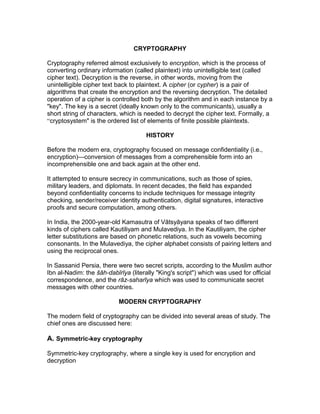Cryptography involves encryption and decryption processes using ciphers and keys, ensuring message confidentiality and integrity. The field has evolved to encompass various techniques including symmetric-key and public-key cryptography, along with cryptanalysis methods. Legal issues surrounding cryptography vary by country, with regulations on usage and export controls, particularly highlighting the role of agencies like the NSA and the implications for digital rights management.


